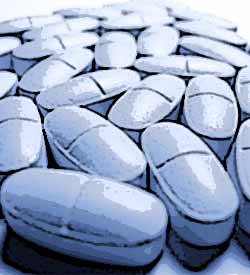PPH
Injuries
PPH injuries have been linked to the dietary
drug Fen-Phen. PPH (or Primary Pulmonary Hypertension) is a rare
and incurable disease.
In the case of PPH injuries, blood pressure
rises in the pulmonary artery that carries blood from the heart
to the lungs and causes severe shortness of breath, fatigue, fainting,
palpitations and chest pain.
Injury, including death, can be the result
of contracting PPH. Many product
liability lawsuits have been filed over PPH injuries.
More About
PPH
According to the American Heart Association, PPH "is a rare
lung disorder in which the blood pressure in the pulmonary artery
rises far above normal levels for no apparent reason. The pulmonary
artery is a blood vessel carrying oxygen-poor blood from the right
ventricle (one of the heart's pumping chambers) to the lungs.
In the lungs, the blood picks up oxygen, then flows to the heart's
left side, where the left ventricle pumps it to the rest of the
body through the aorta."
The American Heart Association goes onto say, "This abnormally
high pressure (pulmonary hypertension) is linked with changes
in the small blood vessels in the lungs. These changes increase
resistance to blood flowing through the vessels. This increased
resistance puts a strain on the right ventricle, which now must
work harder than usual to move enough blood through the lungs."
Fen-Phen
and PPH
Fen-Phen (fenfluramine and phentermine) was taken off the market
on September 15, 1997, when the FDA concluded that its active
ingredients such as Redux was associated with extremely high rates
of severe illnesses, including PPH. PPH injuries have been associated
with Fen-Phen ever since.
Before 1997, the manufacturers of Fen-Phen knew that Fen-Phen:
1. Caused PPH including damage to the valves of the heart
2. Greatly increased the risk on lung disease and fatal heart
attack
3. Had never been approved by the FDA for "off-label"
use as dietary drugs
4. Had never been tested in combination with each other for safety
What can
be done to treat PPH?
First, the symptoms must be noted and PPH must be diagnosed.
Symptoms include fatigue, difficulty breathing, dizziness, fainting
spells, swelling in the ankles and legs and a bluish tint to the
lips, skin and chest. Second, in order to evaluate PPH, the doctor
must perform right heart cardiac catheterization whereby a small
tube or catheter is inserted into the patient's right ventricle
and pulmonary artery in order to measure the pressure produced.
From this measurement, the doctor can prescribe the appropriate
treatment.
Some of the current treatments for PPH include calcium channel-blocking
drugs given orally and Intravenous prostacyclin delivered by a
portable infusion pump. Clinical trials are underway to assess
the effectiveness of other potential treatments such as the use
of Anticoagulants, Diuretics and supplemental oxygen. Heart-lung
or lung transplant is acknowledged as the method of last resort
for those who don't respond to drug treatment.
Early detection is vital. New drugs and therapies have come on
the market recently that can help those with early detection live
relatively normal lives. With early detection of PPH, family and
friends can be gathered and informed and support groups formed
in order to help deal with the illness as effectively and as humanely
as possible.
|


